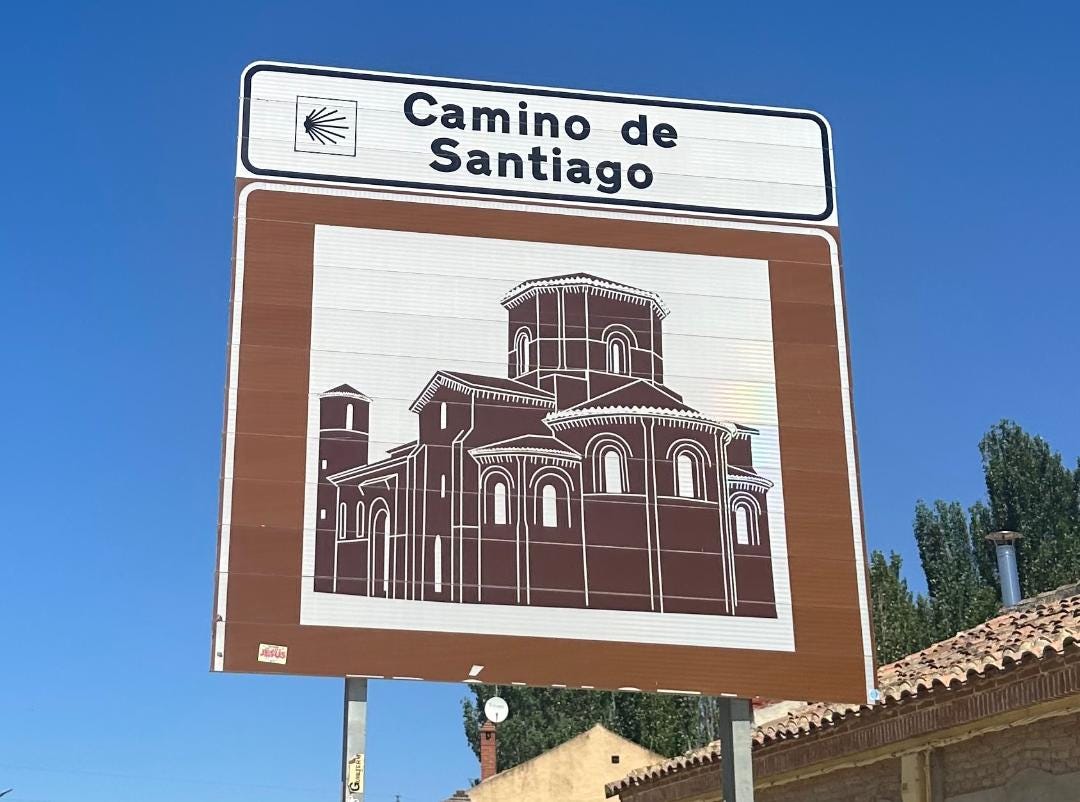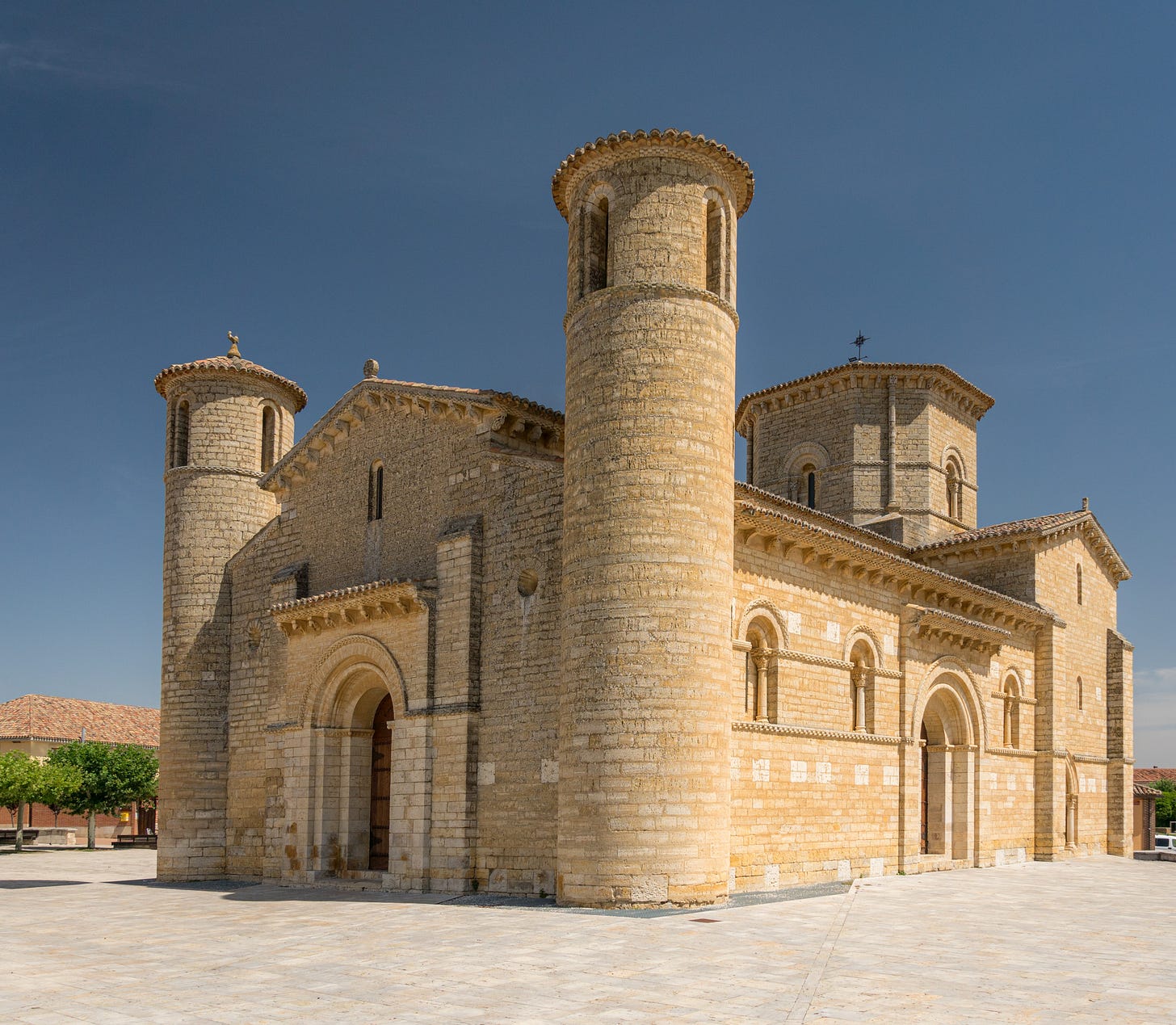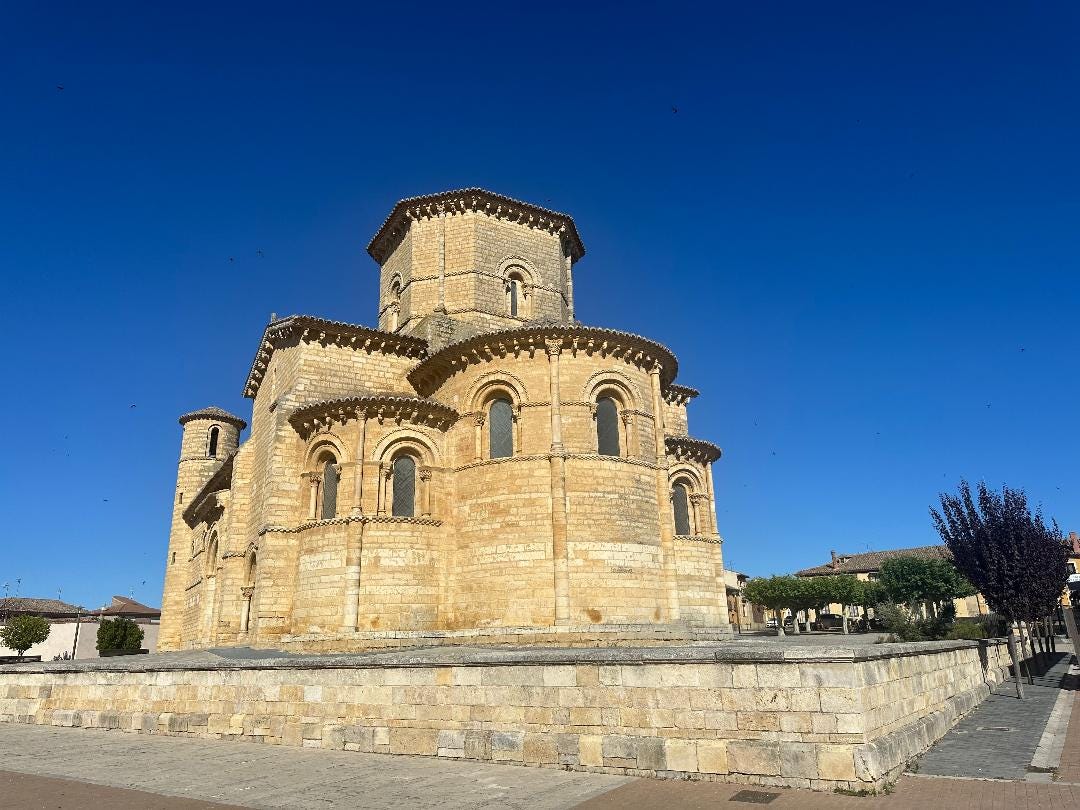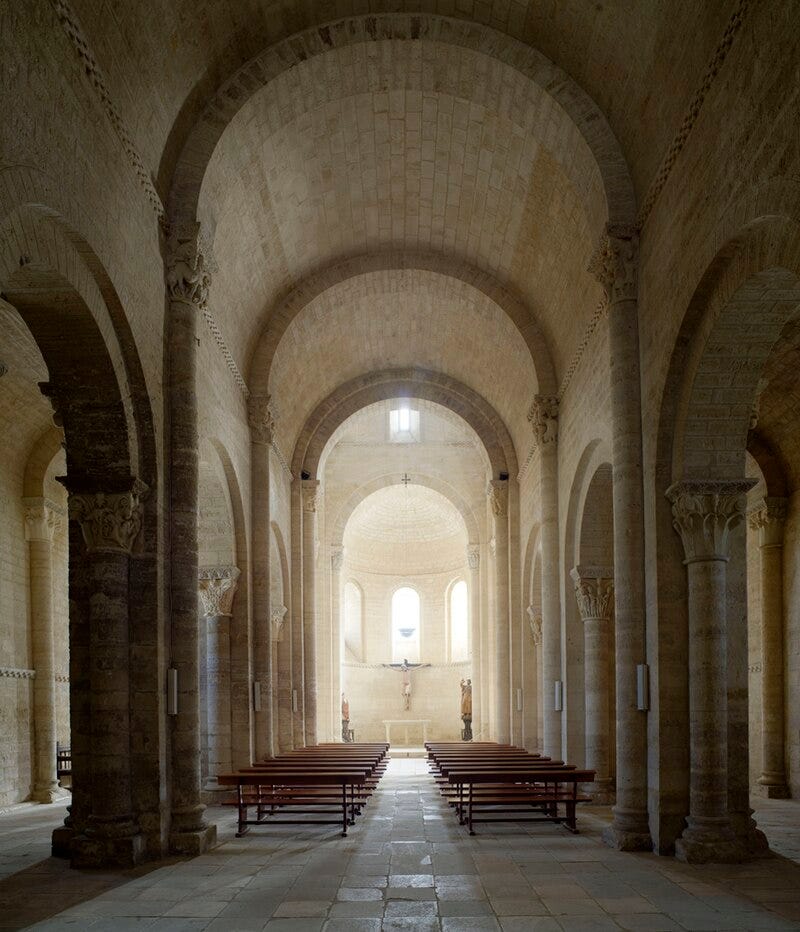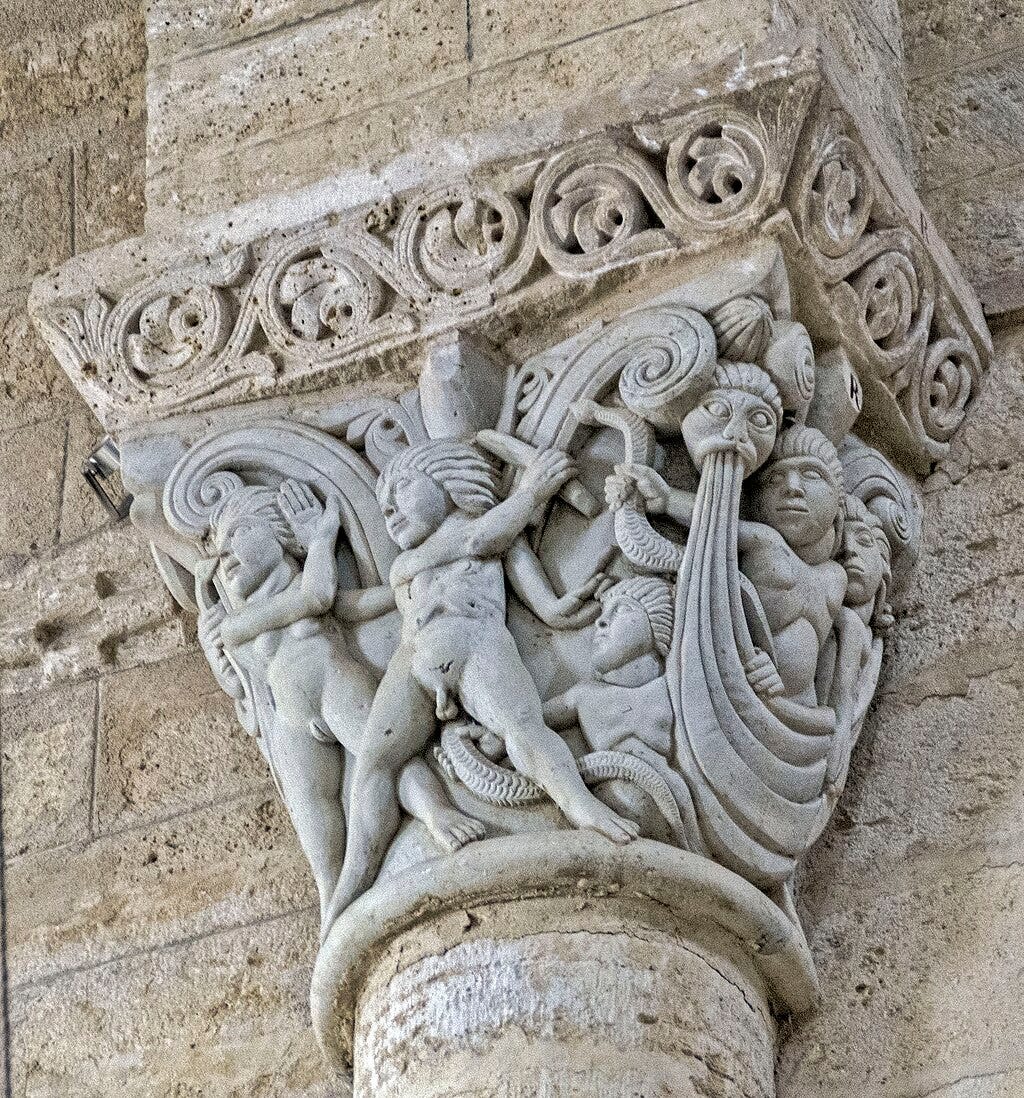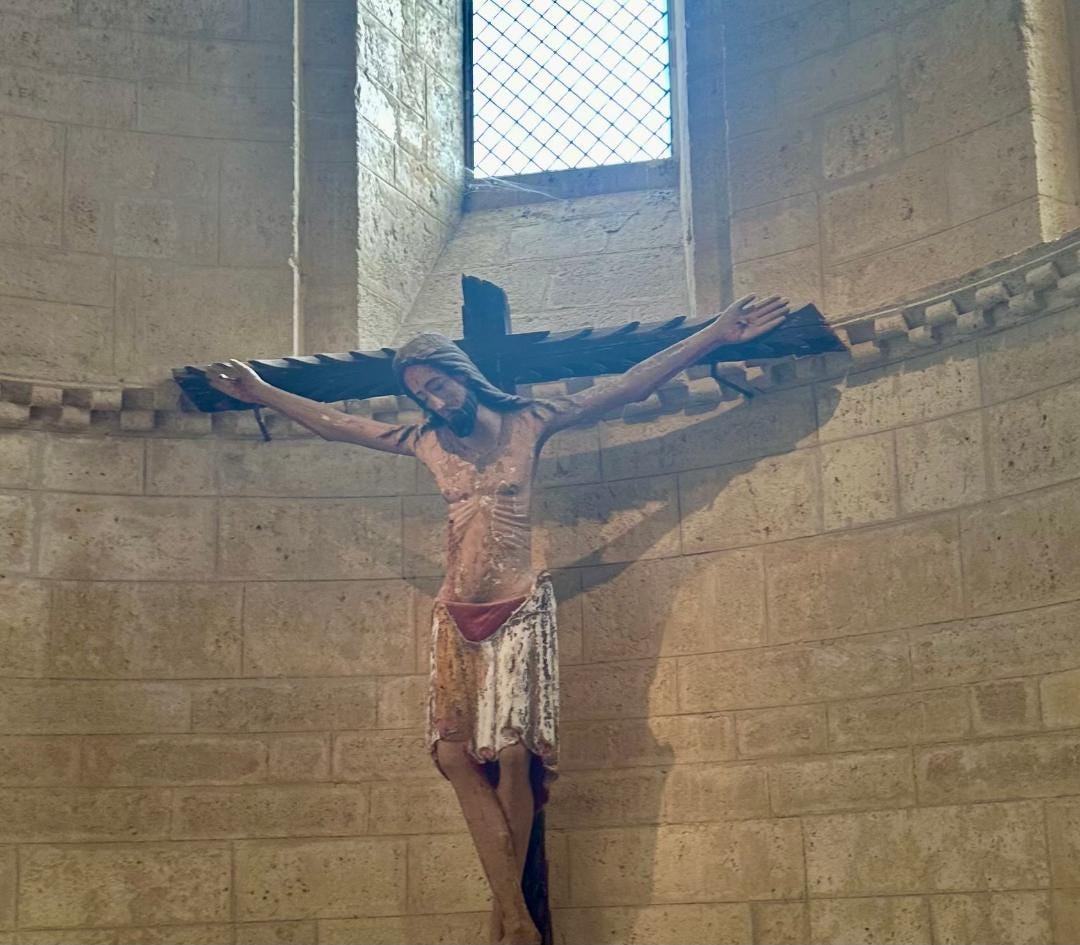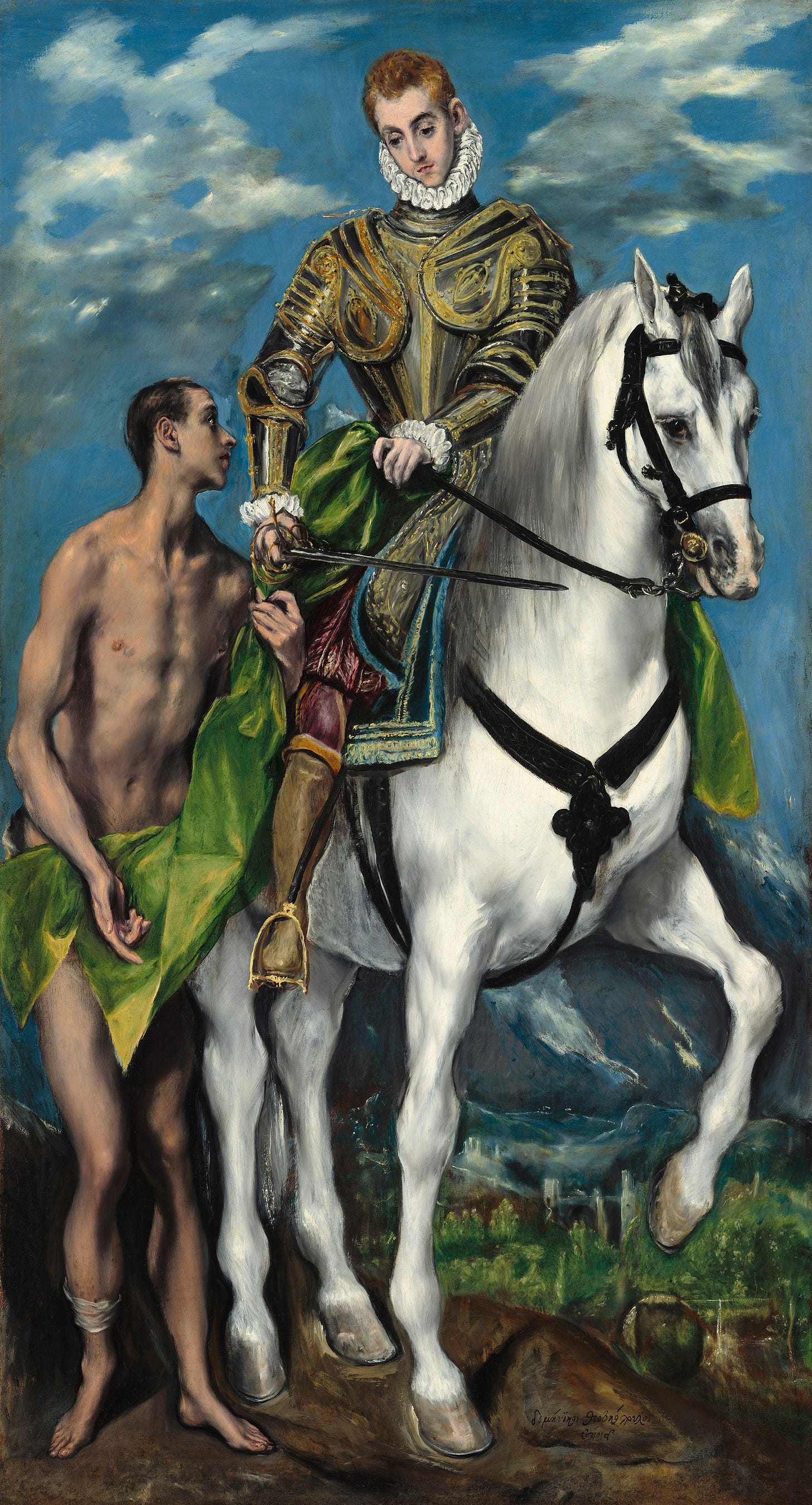Returning to a Perfect Romanesque Church: Saint Martin of Tours in Fromista`
When a pilgrim arrives at Fromista after a long day of hiking, they come to this sign which tells them two things: they are on the Camino de Santiago, and that they are at the home of one of Spain’s most beautiful Romanesque Churches.
The little church the sign highlights shines brightly in Fromista. Frómista? Where is that, you may say, as you search Google Maps?
It is a small village surrounded by wheat fields with less than 1,000 people on a dusty stretch of the Camino de Santiago between Burgos and León, in northern Spain. In addition to pilgrims on the Camino, one comes here to see one of the most perfect Romanesque churches in Spain: St. Martín of Tours, built around the year 1050.
Its compact simplicity is magnetically alluring.
What is it that makes Romanesque churches so inviting? In contrast to the soaring Gothic, they sit so squat, near to the earth and near to us. They are approachable, not overwhelming.
And in comparison to the Baroque, their interior layout is uncluttered. One can sit in the church without distraction, in harmony with God.
But don’t be fooled to think the church is not without skilled craftsmanship, no, go inside and marvel at the 1,000-year-old medieval sculptures on the capitals of the columns.
In all, there are about one hundred sculptures carved into the columns which hold up the building.
But maybe the most memorable feature inside the church is the medieval crucifix that powerfully evokes the pain of Jesus’ Crucifixion, placed just behind the unadorned altar.
Sitting in front of it, almost alone in the church, I began to feel the suffering of Christ’s ordeal; his drooping body took my mind’s eye to the Tau Cross that was so prevalent just a day’s walk before Fromista…
The story of this church is wrapped up with the history of the ancient Kingdom of León in northern Spain. It is a land that predated the assemblage of the country as we know it today. After the death of her husband, King Sancho III, Doña Muna Mayor retired here and commissioned the church. After its construction, the church experienced the ebbs and flows of history, and by the late 1800s its elegant simplicity was nearly unrecognizable. We owe the marvel that we see today to a late 19th century project that restored the church to its original, glorious state.
The church is on the Camino’s French Way, and the French Benedictines brought their ideas of architecture (in this case from Cluny in Burgundy), as well their stories of faith. The church is named for Saint Martin of Tours. Saint Martin was born early in the 4th century in what is present-day Hungary, and he converted to Christianity at a young age, before he joined the Roman Calvary. His faith inspired him to leave the service of the Romans in Gaul (France); he professed that he could serve two masters.
Saint Martin is best known for the account of his using his sword to cut his cloak in two so that a beggar clad only in rags in winter would have some cover. This scene, a model for Christian charity, has been depicted many times in art, and here below, by El Greco.
Centuries ago, the saint’s shrine, in Tours, France, became an often-frequented stop for pilgrims on the road to Santiago de Compostela. Leaving the wonderful little church, it came to me that the idea of pilgrimage is ancient, but not outdated, as I made a prayer to Saint James to guide me along the “way” of my life.



